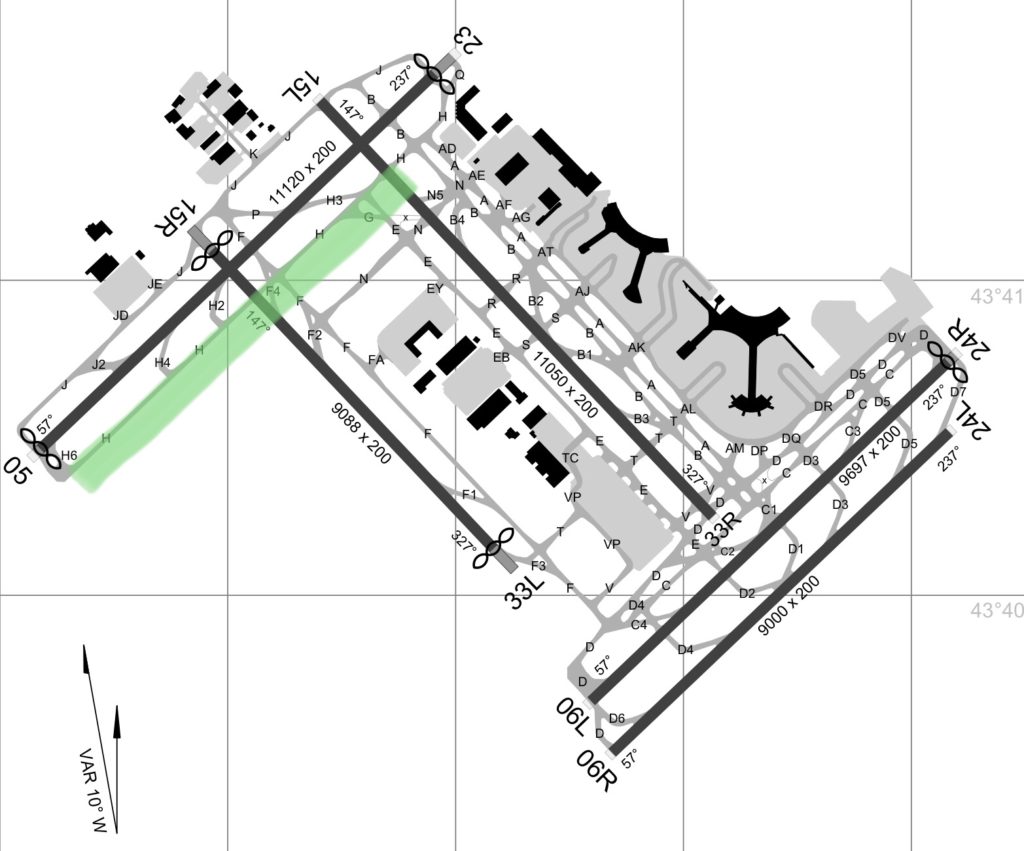

These markings are either eight stripes placed symmetrically about the runway centerline, or the number of stripes is related to the runway’s width. Runway Threshold Markings: Runway threshold markings come in two layouts.This bar is 10 feet wide and extends across the runway’s width. Runway Threshold Bar: A threshold bar presents the beginning of the runway available for landing if the threshold has been relocated or displaced.This identifies pavement areas neighboring the runway side that are not intended for airplane use. Runway Shoulder Markings: Runway shoulder stripes may be used to supplement runway side stripes.Runway Side Stripe Marking: Runway side stripe markings are white markings outlining the edges of a runway.These markings are grouped into one, two and three rectangular bars arranged in pairs about the centerline. Runway Touchdown Zone Markers: These markings pinpoint the touchdown for landing operations and are coded to provide distance information.There are two rectangular markings with a large white stripe on either side of the runway centerline about 1,000 feet from the landing threshold. Runway Aiming Point Marking: The aiming point marking is used for a landing airplane.It consists of a line of 120-foot stripes and 80-foot gaps. Runway Centerline Markings: The centerline of a runway provides alignment guidance for taking off and and landing.

Markings for runways are white, while taxiway markings, areas not intended for aircraft use and holding positions are yellow. There are different airport runway markings used to provide pilots with directions and to assist them operationally. Have you ever considered how it is runways are arranged or what the different markings, signs and layouts mean? Let’s examine these runway components and how they help pilots to maneuver safely and efficiently. Runways are built to accommodate and guide pilots, using visual aids to ensure safe operation. NET Framework™, Pocket PC™, and Mobile 2003™ are trademarks of Microsoft Corporation.Īll other trademarks are the property of their respective owners.Every day, aircraft of all shapes and sizes take off from and land on an airport runway.
#Airport runway layout software#
WingX™, Dynamic Flight Navigator™, and SmartTaxi™ are trademarks of Hilton Software LLC Hilton Software and those persons acting on its behalf for any and all,īut not limited to, liability, bodily injury, and/or property damageĬopyright © 2003-2008 Hilton Software LLC All rights reserved. By using WingX products, you agree to hold harmless While Hilton Software makes every effort to ensure theĪccuracy of its calculations and data, Hilton Software cannot absolutely guarantee WingX products are intended to assist you in your preflight and inflightĪctivities.
#Airport runway layout windows#
Note: Images on this website may be slightly different to what you see on your Windows Mobile device.ġ4 CFR 91.3 says that you, the PIC, are responsible for the safety of theįlight. However, a very advantage is that the runway layout can be set to rotate by using the Track Up mode Will display the aircraft's location on the airport as well as provide the runway incursion warning. By using the Runway Layout display, WingX However, NACO Airport Diagrams only exist for a few hundred airports within the US. Using NACO Charts and WingX's SmartTaxi™ technology, WingX will display the aircraft's position on the airport diagramĪnd warn the pilot, both visually and audibly, when approaching a runway or on a runway - click here. Useful when approaching an unfamiliar airport with intersecting runways. Use of the "To Airport" is to verify that the aircraft is on final to the correct runway. Useful when approaching an airport because WingX shows the runway layout as it is viewable out the window.
#Airport runway layout Pc#
Pocket PC users can also simply drag theirįinger/stylus around the screen to rotate the runway layout. To answer the question of: "What will the runways look like when I am approaching from the north west?" Use the arrow keys to rotate the runway layout.

Manual: In this mode, the user can manually rotate the runway layout to any viewing angle.Being able to view the layout of an airport's runways increases safety.


 0 kommentar(er)
0 kommentar(er)
